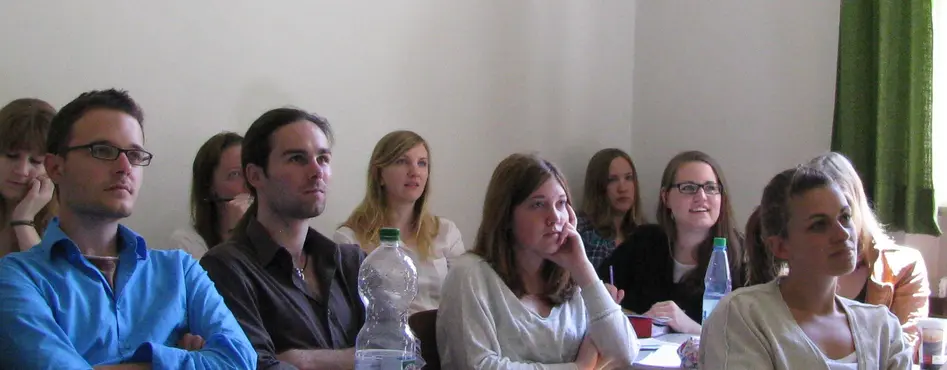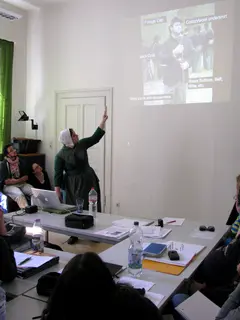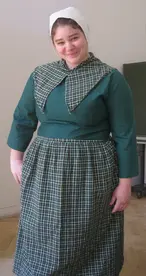Claire Scott (Dartmouth College): "Coming Face to Face with the Past: A Personal History of Civil War Reenacting in the United States"
14.05.2012, 12:15 Uhr, U2/01.30
Student Review by Anna Froch
On May 14th 2012, American Fulbright scholarship holder Claire Scott gave a lecture at the University of Bamberg about her personal experience as a Living History re-enactor. Speaking to students and visitors of the seminar “Germans in the Civil War”, Ms. Scott at first explained the difference between Living History, which portrays people’s everyday experiences and is used for public education, and battle-reenactment, which is the recreation of a specific day or historical event.
In the main part, Scott talked about Civil War Reenactment in the US. Basically, Civil War Reenactment had begun even before the Civil War was officially over. The first post-war reenactment took place in 1913, the year of the 50th anniversary of the Battle of Gettysburg. Since then, Civil War Reenactments have become increasingly popular and in 1998, there was the largest non-veteran reenactment in the history of Civil War Reenactment, involving circa 30,000 participants.

The next part of the presentation was dedicated to Scott’s own experiences as a re-enactor in ‘QuietValley - Living Historical Farm’, a non-profit organization which was opened for the public in 1963. Claire Scott made clear that the work of a Living History re-enactor requires all sorts of different skills and equipment, and that re-enactors have to do diligent research about the people and period they are representing.
Moreover, clothing is very important in order to convey a realistic image of the past. Apart from showing pictures of QuietValley, Scott actually wore one of her re-enactment dresses, which provided the audience with a really vivid impression of what re-enactment is like.
Finally, re-enactors also try to make their speech similar to the one used by the people they represent. Since the family who originally lived in Quiet Valley was of German origin, Scott tries to ‘germanize’ her speech – a fairly complex task given that her words need to be understood by the visitors and still sound historically accurate. Therefore, Scott also explained some of the educational goals of QuietValley: to make people familiar with the challenges faced by early immigrants, including agricultural work.
Claire Scott’s talk was followed by a vivid discussion about issues such as whether reenactments romanticize historical ways of life, and about how to realistically represent slavery or historical gender relation. Given this fact, the question arose whether reenactment can be used as an appropriate tool for education. The answer to this question might be why not? People can still read history books that provide them with many details about different historical events – why not enrich this rather theoretical reading with an insight into people’s everyday lives?

